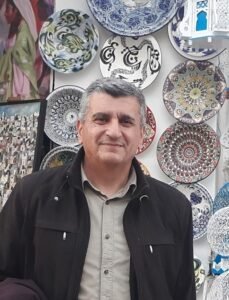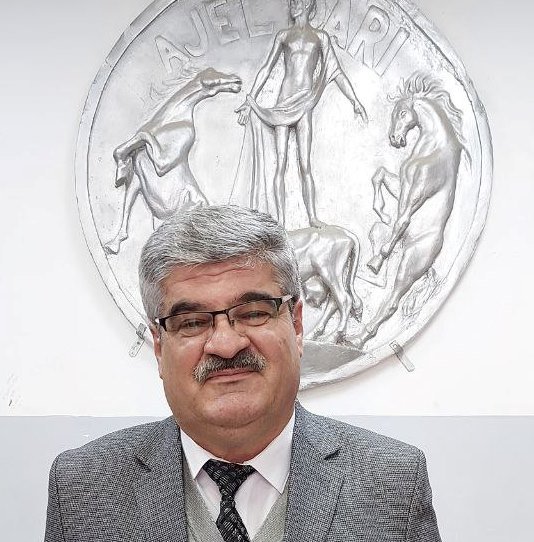The Potential Use of European Goose Breeds (French, German, and Russian) in the Middle East – Reality, Challenges, and Opportunities

Dr. Majed Hamed Al Saegh / poultry pathologist / Australia
General Introduction
In light of the growing food security and climate challenges in the Middle East, poultry farming is seen as a strategic tool to support food independence and reduce reliance on imports. While chickens and ducks dominate the poultry sector, European goose breeds – particularly Toulouse (France), Embden (Germany), and Russian White Goose – represent a valuable biological and economic resource that remains underutilised. These breeds can be effectively integrated into modern agricultural and rural development programmes across the region.
Environmental and Economic Potential in the Middle East
- Several countries in the Middle East possess features that make them suitable for raising European geese, including:
- Diverse climates: From cold highlands (Kurdistan, northern Syria, Lebanon mountains) to warm plains (central Euphrates, Nile Delta, Gulf oases).
- Availability of open spaces: Family farms, orchards, and underutilised agricultural lands provide ideal environments for semi-intensive systems.
- Integrated agriculture systems: Crop residues can be used to feed geese, while goose manure serves as high-quality organic fertiliser.
- Rising demand for alternative animal protein: Especially among health-conscious consumers and supporters of local, organic food products.
Suitability of European Breeds to Arab Environments
First : Toulouse Goose (France):
- Requires careful management but produces high-quality meat and fatty liver.
- Ideal for premium or export-oriented projects.
- Prefers moderate climates and may need environmental adjustments in hot regions.
Second : Embden Goose (Germany):
- Fast-growing and highly efficient at converting feed into meat.
- Suitable for semi-intensive or free-range farming, particularly in rural areas.
- Ideal for farmers seeking rapid meat production at reasonable costs.
Third : Russian White Goose (Russia):
- Resilient to harsh conditions such as cold, heat, and drought.
- Can graze on pastures, significantly lowering operational costs.
- Perfect for small-scale, family-based, and sustainable farming projects.
Opportunities to Integrate European Geese in Development Projects
First : Empowering Rural Women:
- Goose farming requires minimal physical effort or advanced techniques.
- It can be a reliable source of independent income for rural women.
Second : Enhancing Food Security in Fragile Areas:
- Geese can be raised in conflict-affected or displaced communities as a direct food source.
- Eggs can be used for hatching or consumption, enabling continuous local production.
Third : Organic Agriculture and Farm Integration:
- Goose manure serves as an excellent organic fertiliser.
- Geese can be raised under olive trees or vineyards without harming the crops.
Current Challenges
First : Lack of Technical Expertise:
- Fewer specialists in goose farming compared to chicken.
- Lack of dedicated training materials in Arabic.
Second : Veterinary Vaccination Gaps:
- Most vaccines in Arab markets are designed for chickens, not geese.
- There’s a need to develop tailored biosecurity protocols for geese.
Third : Absence of Genetic Improvement Programmes:
- No active breeding or hybridisation initiatives to produce an Arab goose line.
- Full dependence on importation is not a long-term sustainable solution.
International experiences applicable in the Middle East
| State | experience | lessons learned |
| Poland | Integrating geese into organic farming programs | relying on natural feed, producing high-quality eggs and meat |
| Egypt | has limited experience with local and French geese | There is a need to improve breeds and raise awareness. |
| Turkey | Goose Fattening Projects on the Anatolian Ridges Russian White Geese | Prove Their Efficiency in Mountain Climate
|
Pioneering Regional Project Proposal
Project Title: “Towards Sustainable European Geese Production in the Middle East”
Components:
- Importing a breeding nucleus of three European breeds.
- Establishing experimental farms in northern Iraq, the Nile Delta, and the Bekaa Valley in Lebanon.
- Training 300 farmers in open and semi-intensive goose farming.
- Producing 10,000 birds in the first season for distribution to small breeders.
- Developing vaccination and veterinary care protocols in Arabic.
- Marketing support for products (eggs, meat, feathers, and fatty liver) in cooperation with tourist markets and hotels.
Conclusion
The three European goose breeds represent a major strategic opportunity to support food security, rural development, and sustainable agriculture programs in the Middle East. With the rising cost of poultry and the increasing demand for alternative and organic meats, the integration of geese into livestock production could be a major transformation if implemented scientifically and systematically, supported by veterinary training and research.



